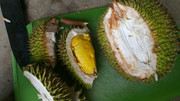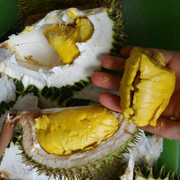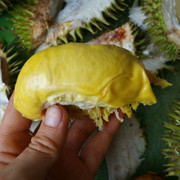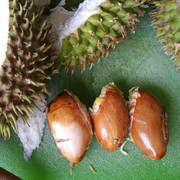23
« on: August 07, 2017, 08:32:36 AM »
I'm not claiming any authoritative information here, but this is just my personal summary of tidbits on the topic from good sources, not from seed vendor websites and blogs and other such extremely unreliable sources. The major point of contention is whether we can safely ID achacha as G. gardneriana. Oscar says probably not, but solid info supports that ID, including private communication from Charles Clement of Instituto Nacional de Pesquisas da Amazônia that was conveyed to me by a mutual friend. Newer information on Garcinia is also coming from Patrick Sweeney of Yale. I believe there is some DNA research on American Garcinias in the process of being published, but I don't have any details.
G. gardneriana, "bacuri mirim" (Brazil), "achachairu" (Bolivia), "achachairu corriente" (Bolivia), "achacha" (Australia/USA), "without mucronate apex", "narrowly elliptic leaves"
G. acuminata, "bacurizinho", very similar to G. gardneriana
G. macrophylla, "bacuripari", 5-8cm diameter, "scant pulp", large leaves, "prominently beaked fruit"
G. brasiliensis, "bacuripari liso", "smooth bacuripari", similar to bacuripari, 3-4cm diameter,
G. intermedia, "lemondrop", same as G. brasiliensis???
G. madruno, similar to G. macrophylla, echinate
G. benthamiana, slightly echinate
G. guacopary, "achachairu chico" (Bolivia), "broadly elliptic leaves", "mucronate apex that can pierce the skin", small fruit, "stiff pungent leaves", "soft rind", "thick, soft, spongy bark"
G. sp, "Luc's garcinia" (global internet), "Giant Luc" (global internet), "Mexican garcinia" (global internet), "limoncillo" (Mexico), larger than achacha
G. humilis, "G. lateriflora", from Monserrat, described in 1798, known in several Carribean locations, red skin, inside looks like a seedy mangosteen gone bad
In Bolivia, 5 species of Garcinia are found:
G. madruno
G. benthamiana
G. macrophylla
G. guacopary
G. gardneriana
According to Oscar's research, the mislabelling of achacha as G. humilis comes from various scientific sources over a period of many years and various publications, an error greatly amplified and propagated by the Australian farm who introduced commercial cultivation of the fruit in Australia.




